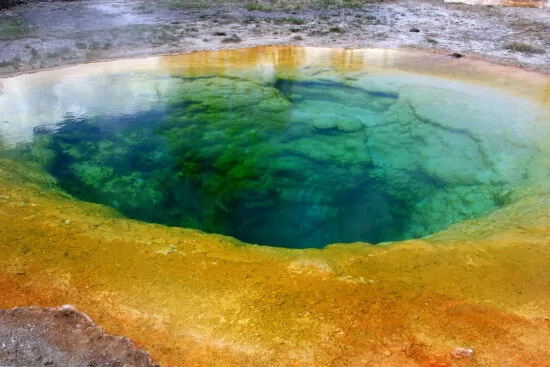
The two universities have constructed mathematical models to show what the springs looked like prior to the 1940’s. Why that time frame? Because that’s prior to the “invasion” of tourists on the natural habitat who have decided to use the springs as wishing wells, tossing in coins or even worse, not taking care of their garbage or tossing it intentionally into the springs. Prior to this study, there has been no mathematical model developed to measure the physical and chemical variables related to iconic pools and springs, such as those in Yellowstone National Park.
They constructed a one dimensional model to reproduce the stunning colors of the springs. Their tools of the trade – digital SLR cameras to see all the stuff visible to the naked eye, long-wave thermal imaging cameras to get readings on the temperature of the water itself, and hand held spectrometers.
“What we were able to show is that you really don’t have to get terribly complex – you can explain some very beautiful things with relatively simple models,” said Joseph Shaw, a professor at Montana State University and director of the university’s Optical Technology Center. Shaw, along with his Ph.D. student Paul Nugent and German colleague Michael Vollmer, co-authored the new paper.
The study did confirm that the change in water color is related to lower water temperatures in the springs. It is directly linked to the microbial mat composition located within the springs themselves. Items such as coins and trash, along with natural debris like rocks, are also contributing to the color change.
While the researchers are not experts in thermal pools, they initially set out to study the optics and the color spectrum of the pools and springs themselves and what may affect their over all appearance. All the leaders involved in the study are actually members of the Optical Society. During their study, the research revealed more than they had originally bargained for and answered some questions no one has ever bothered to ask.
So what did these pools like in the past? They were much more blue in color without the other colors that we have grown used to seeing in any of these, such as the Morning Glory hot spring pool. They reported their findings in the journal Applied Optics.
(Photo courtesy of Frank Kovalchek)
Comments